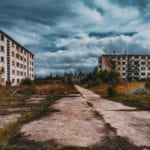 Music
Music  Music
Music  History
History 10 Less Than Jolly Events That Occurred on December 25
 Weird Stuff
Weird Stuff 10 Funny Ways That Researchers Overthink Christmas
 Politics
Politics 10 Political Scandals That Sent Crowds Into the Streets
 Weird Stuff
Weird Stuff Ten Bizarre Facts About The Doge Meme
 Our World
Our World 10 Ways Your Christmas Tree Is More Lit Than You Think
 Movies and TV
Movies and TV The 10 Coolest Stars to Set Sail on The Love Boat
 History
History 10 Things You Didn’t Know About the American National Anthem
 Technology
Technology Top 10 Everyday Tech Buzzwords That Hide a Darker Past
 Humans
Humans 10 Everyday Human Behaviors That Are Actually Survival Instincts
 Music
Music 10 Surprising Origin Stories of Your Favorite Holiday Songs
 History
History 10 Less Than Jolly Events That Occurred on December 25
 Weird Stuff
Weird Stuff 10 Funny Ways That Researchers Overthink Christmas
Who's Behind Listverse?

Jamie Frater
Head Editor
Jamie founded Listverse due to an insatiable desire to share fascinating, obscure, and bizarre facts. He has been a guest speaker on numerous national radio and television stations and is a five time published author.
More About Us Politics
Politics 10 Political Scandals That Sent Crowds Into the Streets
 Weird Stuff
Weird Stuff Ten Bizarre Facts About The Doge Meme
 Our World
Our World 10 Ways Your Christmas Tree Is More Lit Than You Think
 Movies and TV
Movies and TV The 10 Coolest Stars to Set Sail on The Love Boat
 History
History 10 Things You Didn’t Know About the American National Anthem
 Technology
Technology Top 10 Everyday Tech Buzzwords That Hide a Darker Past
 Humans
Humans 10 Everyday Human Behaviors That Are Actually Survival Instincts
10 Small Towns That Have the Darkest Pasts
A lot of media tend to view news and history through the lens of countries and their big, powerful cities. Though that makes sense from the standpoint of simplicity, too often, it leaves out the ground-level turmoil that boils up in small towns and villages.
We know about the Boston Tea Party, but what about Grey’s Raid at Fairhaven? We all remember the Alamo, but how many remember Gonzalez and Goliad?
Sometimes, small towns play host to the biggest calamities, tragedies, and misfortunes to ever occur. As such, a lot of little places have developed large reputations for darkness and horror. Here are ten of the darkest, small settlements whose dubious pasts place them in the history books right next to their big-city cousins.
Related: Top 10 Ghost Towns Inside Or Near Famous Cities
10 Burke, Idaho
Today, Burke, Idaho, is an abandoned ghost town. Most of its buildings still stand, though dilapidation is slowly taking hold as the decades go by. Founded in 1887 as a prosperous mining settlement, Burke began its life strong but was rapidly overpowered by violence and natural disasters.
Within just four years of its founding, Burke was the site of a deadly avalanche, a shootout between miners and mine owners, and an accidental mine explosion. By 1892, the governor of Idaho had declared martial law in Burke and sent hundreds of soldiers to restore peace. It was short-lived. Over the next two decades, Burke was subject to a deadly hotel fire, another mine explosion (this one intentional and malicious), another fatal avalanche, another fire, a flood, and one last fire. If anywhere on Earth is cursed, it’s Burke.
9 Liberty & Independence, New Jersey
Liberty and Independence are two small, neighboring towns in New Jersey that are unremarkable for the most part. A road that snakes through them both, aptly named Shades of Death Road, earns them a spot on this list.
The road earned its name through a series of dark and violent incidents that occurred along its length, running the whole gamut of human suffering. The site was home to a deadly malaria outbreak, a string of lethal wild cat attacks on travelers, repeated robberies and murders by highwaymen, the lynching of said highwaymen, three unrelated brutal murders (including a beheading), and an above-average amount of fatal car accidents. And that doesn’t even include the various paranormal sightings along the road and neighboring Ghost Lake.
8 Pripyat, Ukraine
Pripyat may not be a household name in America, but its neighbor Chernobyl definitely is. Though Pripyat swelled to almost 50,000 residents at its peak, pushing past the boundary of a small town, it now spends every day with a total population of zero.
Pripyat was a functioning city for 16 years before it was hastily abandoned during the nearby Chernobyl disaster. After 16 years of habitation, it has now spent 35 years as an irradiated, decaying ghost town. One of the most famous photos meant to highlight the tragedy of Chernobyl is actually from Pripyat; it shows the Pripyat Amusement Park and, in particular, its towering Ferris wheel, now blanketed in rust and standing eerily still. As the whole population was evacuated in only two days, the ruined city buildings still hold much of their former contents—schoolbooks sit open on desks and sheets still lay on their beds, half thrown off in haste.
7 Attica, New York
Attica is a tiny town just a short drive from Buffalo in upstate New York. In its 210-year history, hardly anything of note has occurred in the quaint little country town. That is, aside from some of the most notorious torture of prisoners in U.S. history and its single bloodiest prison riot.
The Attica Correctional Facility is a maximum-security prison famous, in part, for housing some of the most high-profile criminals in U.S. history, including Mark David Chapman, Joel Rifkin, and Son of Sam. The facility is also famous for its mistreatment of its prisoners, including overcrowding, over-liberal use of solitary confinement, and race-based punishment from guards. This led to the Attica Uprising in 1971, a mass prisoner rebellion that ended in over 40 people (almost all of them prisoners) dead.
6 Elaine, Arkansas
Elaine, Arkansas, is one of those tiny towns that nonetheless play a big role in revealing the systemic issues that plague America. Even now, its population is less than 700, so it’s easy to imagine how small and deceptively sleepy it must have seemed in 1919 before it became the site of one of the worst racial conflicts in U.S. history: the Elaine Massacre.
In 1919, dozens of sites across the U.S. saw racial violence during what came to be known as the Red Summer. The most violent of these incidents was the massacre in Elaine, which claimed the lives of an estimated 100 to 240 local black farmers. The attack was carried out by a combination of local white mobs, the KKK, and federal soldiers. Immediately following the incident, the Arkansas state government began to cover it up, though luckily, the truth eventually found its way out. It has left the town with a permanently scarred reputation.
5 Centralia, Pennsylvania
Centralia, Pennsylvania, used to be home to over 1,000 residents. As of 2017, it had five. The town isn’t haunted by any murders or massacres. Even its acquisition from the Indigenous population was peaceful by American standards. Instead, Centralia is nearly abandoned and nicknamed “Hell on Earth” for one reason: the whole town is on fire and has been for 59 years.
In May 1962, local firefighters were hired to clean up the town dump as they always had: by setting it on fire. Except that this time, the fire didn’t die out. A passage beneath the dump connected to the labyrinthine network of coal mines beneath the town. The fire spread and, fueled by the immeasurable quantities of natural gas in the tunnels, burned and burned. It took 30 years for the majority of Centralia’s residents to evacuate the city, as sinkholes, open flames, and toxic gas clouds slowly engulfed the town, leaving it the fuming wasteland it is today.
4 Oradour-sur-Glane, France
Most towns on this list have histories built partially on murder; it’s a common inciting incident for ghost myths and dubious reputations. Rarely, however, are towns famous for the murder of the entire town in one incident. Yet that’s precisely what happened to the country village of Oradour-sur-Glane in France.
In 1944, the leader of a Nazi SS regiment received potential intel that a fellow Nazi officer had been taken prisoner and executed by the local French resistance. In retaliation, the regiment carried out one of the most violent mass executions in history at Oradour-sur-Glane. After a few hours, 643 civilians, most of them women and children, were dead. The city was razed, and, in deference to the slain, it was never rebuilt, forever standing as a monument to the massacre.
3 Pine Ridge, South Dakota
The Pine Ridge Indian Reservation in South Dakota has been a black spot on America’s record ever since 1890 when it was the site of the infamous Wounded Knee Massacre.
Leading up to the attack, local white settlers and army men became increasingly alarmed at Indigenous activity in the area. Their newly-formed Ghost Dance movement was seen as a precursor to war, and so the U.S. Army attempted to relocate local Lakota people and disarm them. Tensions were too high, the disarmament went tragically awry, and by the end of the day on December 29, 1890, 250 to 300 Lakota men, women, and children lay dead at the hands of the U.S. 7th Cavalry Regiment. The incident has since become a symbol of past government-Indigenous relations, a rallying cry for Indigenous rights movements, and a dark stain in American history books.
2 Sharpsburg, Maryland
Sharpsburg, Maryland, is a village of only 700 with 281 years of almost exclusively peaceful history. There is almost nothing of note to say about the little village except for one fact: in 1862, it was the site of the single bloodiest day in American history, the Battle of Antietam.
On September 17, 1862, Union and Confederate forces met in Sharpsburg and battled from 5:30 am to 5:30 pm. In those 12 hours, more than 22,000 American soldiers died. No other day in the country’s history produced as many casualties, even in World War II, and that has made Sharpsburg famous in the most ghoulish of ways.
1 Salem, Massachusetts
No list of towns with dark, bloody histories would be complete without the most famous haunted town in America: Salem, Massachusetts (more precisely, Salem Village). Salem’s bloody and spooky reputation has made it a modern mecca for Halloween lovers and fans of the occult. But unlike Halloween, the events in Salem between 1692 and 1693 were not the fun, playful kind of dark. They were the malicious, insidious, please-take-a-lesson-from-this kind of dark.
The Salem witch trials were the deadliest witch hunt in U.S. history. In a little over a year, Massachusetts executed more alleged witches and conspirators than it had in the preceding century. At least 25 people died due to the trials and all of them, needless to say, were innocent of witchcraft. The incident has forever linked the town of Salem (and to a lesser extent neighboring Danvers, the modern-day location of Salem Village) to the dangers of religious extremism, unchecked groupthink, and the subversion of due process.








